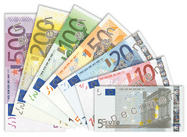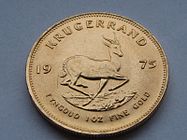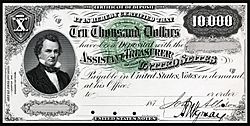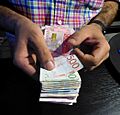Money facts for kids
Money is what people use to buy and sell things and services. It's also what people get paid when they sell their own items or help others.
There are many types of money around the world. Most countries have their own unique money. For example, the United States uses the dollar, and Britain uses the pound. Money can also be called currency or cash. Usually, a government prints paper money and makes coins at a special factory called a mint.
Contents
How Money Started: A Brief History
The idea of bartering, or trading things directly, is very old. A long time ago, people didn't use money to buy or sell. Instead, they traded what they had for what they needed. For example, someone with many cows might trade with someone who had a lot of wheat. They would swap a little of what they had. This helped them get what they needed for their farms and families.
Over time, people started using things that were easier to carry than cows. These items were also seen as valuable. This led to trading things like jewelry and spices.
From Trading Goods to Using Coins

When people stopped trading goods like cows and wheat, they needed something new. This new "money" had to last a long time, have a known value, and be easy to carry. The first country to make metal coins was Lydia. This happened in the 7th century BC, in what is now Turkey.
These early Lydian coins were made from a measured amount of precious metal. They had a picture of a lion stamped on them. This idea quickly spread to Greece, the rest of the Mediterranean area, and then worldwide. Coins were made in standard sizes and shapes. In some places, people even used things like clam shells or blocks of salt as money!
Using money had many benefits over trading goods:
- Easier to Divide: Imagine someone owning cows but only needing "half a cow's worth" of wheat. They wouldn't want to cut their cow in half! With money, they can sell the cow and buy exactly the amount of wheat they want.
- Lasts Longer: Cows can die, and wheat can rot. But money lasts much longer. If you sell a cow for money, you can save that money for a long time. You can even pass it on to your children.
- Standard Value: Not every cow is the same. Some are old, some are young. Some wheat is good, some is moldy. This makes it hard to agree on how much one cow is worth in wheat. But money is standard. One dollar is worth the same as another dollar. This makes it much easier to count and add up.
The Rise of Paper Money
Later, after hundreds of years of using coins, paper money appeared. It started as a promise to pay in coins, like an "I.O.U." note. The first real paper money was used in China in the 10th century AD. Paper money was also printed in Sweden between 1660 and 1664. Both times, it didn't work well. Banks often ran out of coins to exchange for the paper notes, so they had to stop.
Massachusetts Bay Colony printed paper money in the 1690s. This time, it became more common and worked better.
Today, much of what we consider money isn't even something you can hold. It's often just numbers in bank accounts, stored in computer memories. Still, many people feel more comfortable using physical coins and paper money. They might not fully trust using electronic money stored on a computer memory.
Different Kinds of Money We Use
Many types of money have been used throughout history. Here are some of them:
- Cowry shells
- Commodity money
- Convertible paper money
- Inconvertible money
- Bank deposits
- Electronic money
Commodity Money
Commodity money can be used for other things besides just buying and selling. It has its own value because it's useful or valuable by itself. Examples of commodity money include cattle, silk, gold, and silver.
Paper Money: Convertible and Inconvertible
Convertible paper money is paper money that can be exchanged for gold or silver. For instance, gold and silver certificates were convertible paper money. You could trade them in for the actual metal.
Inconvertible money is money that cannot be exchanged for gold or silver. Today, most notes and coins are inconvertible money. Governments declare this type of money to be official. This kind of fiat money is a country's legal tender. This means it must be accepted for payments. Today, notes and coins are the main currencies used in bank deposits.
Bank Deposits
Bank deposits are money held in a bank. They can be:
- Demand deposits (like checking accounts, where you can take money out anytime)
- Savings deposits (money you save, often earning interest)
- Time deposits (money you agree to keep in the bank for a set time)
- Negotiable certificates (special types of time deposits that can be traded)
Images for kids
-
A sample picture of a fictional ATM card. The largest part of the world's money exists only as accounting numbers which are transferred between financial computers. Various plastic cards and other devices give individual consumers the power to electronically transfer such money to and from their bank accounts, without the use of currency.
-
In a 1786 James Gillray caricature, the plentiful money bags handed to King George III are contrasted with the beggar whose legs and arms were amputated, in the left corner.
-
A 640 BC one-third stater electrum coin from Lydia
-
A person counts a bundle of different Swedish banknotes.
-
A 1914 British gold sovereign
-
President J. K. Paasikivi illustrated in a former Finnish 10 mark banknote from 1980
See also
 In Spanish: Dinero para niños
In Spanish: Dinero para niños


















